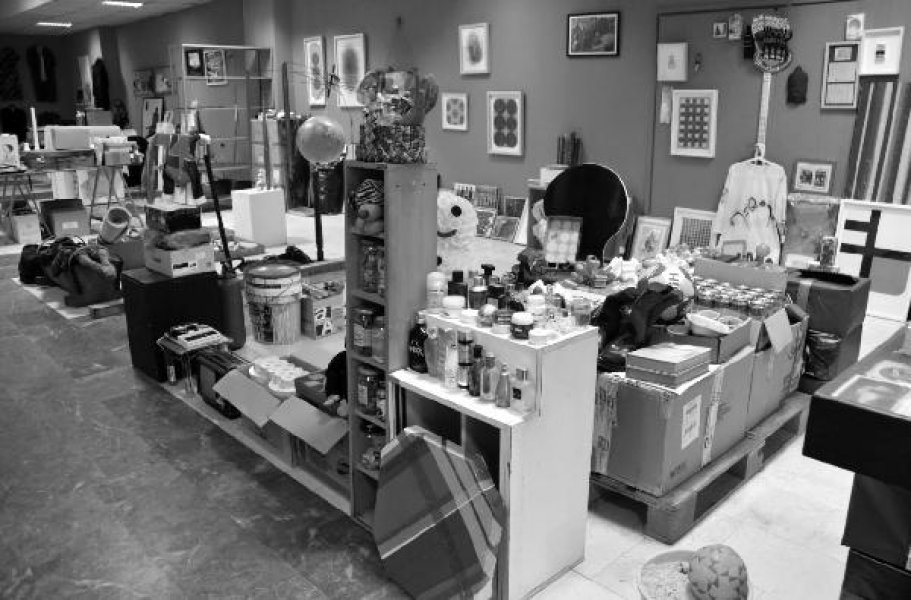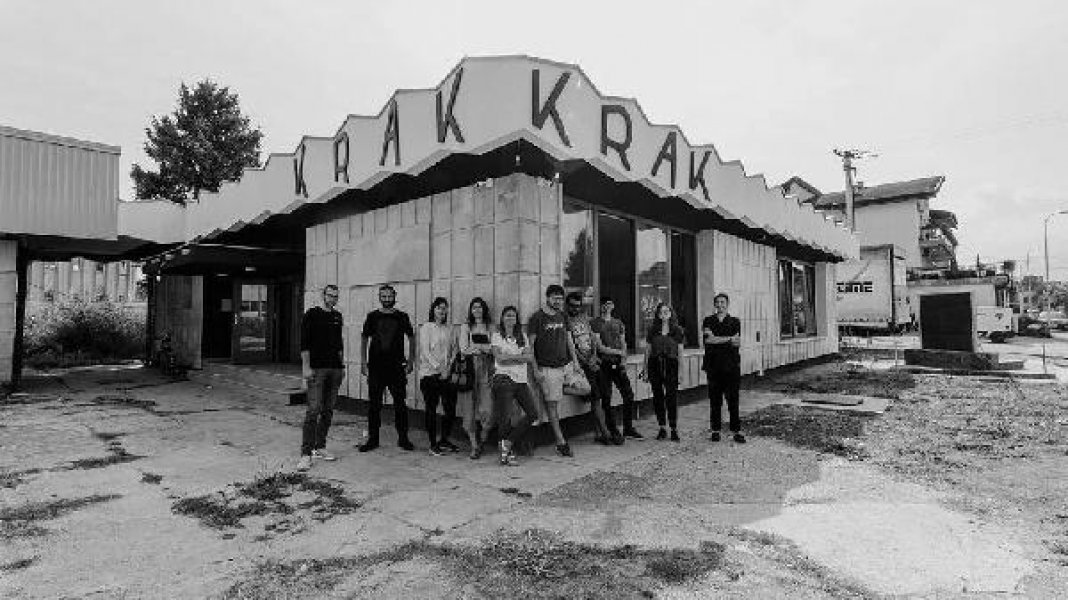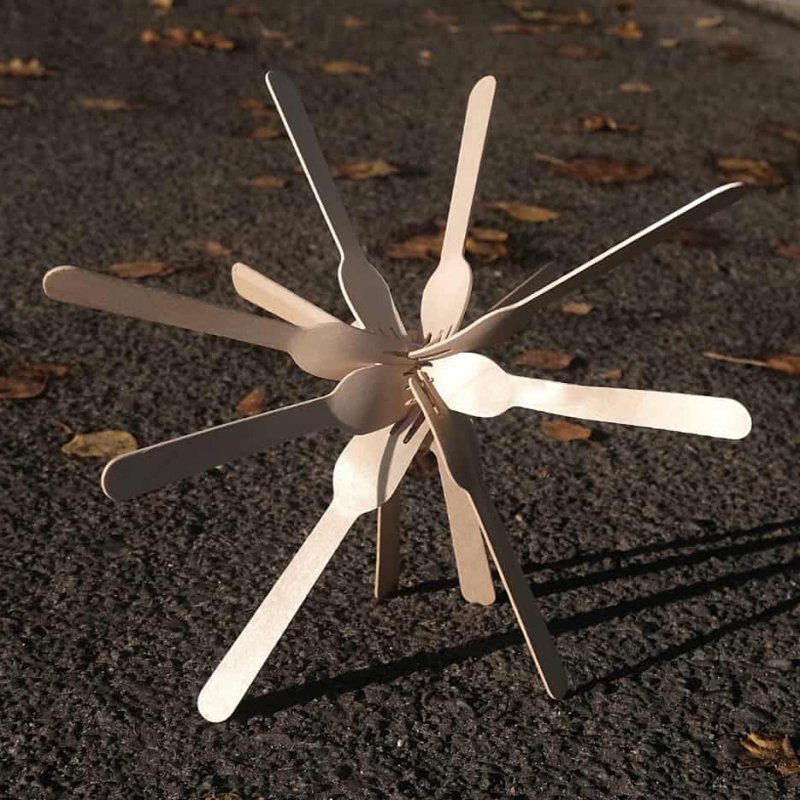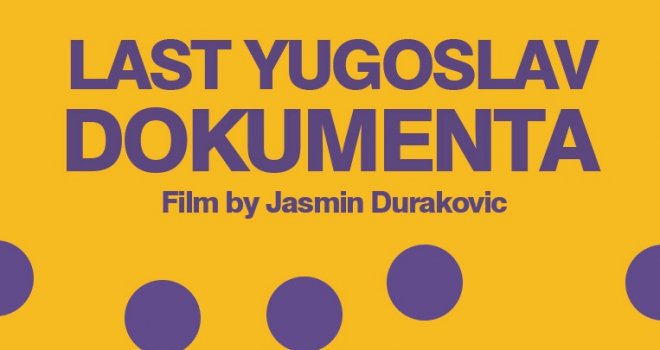By Jon BLACKWOOD, Art Montly
It’s not easy to be a professional artist or cultural worker anywhere these days, but particularly so in Bosnia-Herzegovina. In December last year, 28 years had passed since the signing of the Dayton agreement that brought a fraught peace to the country in 1995. Responsibility for cultural management and institutions was le! out of the Dayton constitution, a political oversight that continues to bedevil attempts to form a joined-up cultural policy across the country. In Bosnia’s fiendishly complicated political settlement there is no minister for culture at state level, instead there are two ministers for culture at entity level – the Bosniak-Croat Federation and Republika Sprska – and below this level there are ministers with responsibility for culture in each of the country’s cantonal governments, although those cultural briefs o!en sit alongside responsibilities for sport and ‘civil a#airs’. Moreover, whatever initiatives may be launched in any one of these ten cantons may well clash with cultural initiatives proposed by the numerous politicians working at a city or district council level. The inevitable result is an administrative nightmare, where a patchwork of competing cultural policies and initiatives – should they exist at all – appear ad hoc across the numerous territories of this contested state. The debate surrounding artists’ precarity in recent times across the UK has been a weary reality for artists in Bosnia-Herzegovina for many years.
Despite this, art is still made, artists are still trained very well at the country’s art academies, and exhibitions and roundtables still happen with varying levels of public engagement and interest. There was a palpable sense of the passing of the generations at the end of 2023, particularly in the capital, Sarajevo. Most notably, many artists across former Yugoslavia reacted with sadness to the death of Aleksandar Saša Bukvić (1949–2023). A graduate of Sarajevo’s art school, Saša Bukvić was an artist and activist thoroughly engaged in contemporary art right until the end of his life; a founding member of the late avant-garde formation Zono (Bell) from 1982 to 1992, he later ran a gallery of the same name in various locations around Sarajevo. Saša Bukvić worked extensively in these years with the performance artist Jusuf Hadžifejzović (b1956) and opened the remarkable Charlama gallery housed in Sarajevo’s Skenderija shopping centre. Constructed in the late 1960s, the centre is now rather run down, shoppers having moved on to newer and more modern retail spaces elsewhere in the city. Hadžifejzović had initiated a festival of contemporary art in Skenderija at the beginning of the 2010s, entitled Sub Dokumenta, but relations between the Skenderija management and contemporary artists have long since become chilly. With Saša Bukvić gone and Hadžifejzović seriously ill, at the time of writing Charlama seems to have been repossessed by the shopping centre owners.

Fortunately KRAK arts centre in Bihać has stepped in recently, to take on management and storage of Charlama’s significant contemporary art collection, but it is uncertain if it will ever return to Sarajevo. The dynamic relationship between Saša Bukvić and Hadžifejzović is the subject of a recent touching documentary film, "The Last Yugoslav Dokumenta", directed by Jasmin Duraković. In the film, the two artists engage with colleagues across the previous generation of Yugoslav artists and critics from the late 1970s and early 1980s, remembering the significance of the canonical ‘Yugoslav Dokumenta’ exhibitions held in Skenderija in 1987 and 1989. The film shows the depth and reach of these exhibitions, and how they were produced with enthusiasm, optimism and very little money. A key problem in contemporary Bosnia-Herzegovina is a lack of institutional memory. Few young artists are aware of the work of Saša Bukvić and Hadžifejzović, let alone of the Yugoslav Dokumenta.
The organisations that underpinned contemporary debate in Sarajevo a decade ago, such as Pierre Courtin’s duplex100m2, which ran from 2004 to 2018, and the Sarajevo Centre for Contemporary Art led by Dunja Blažević from 1996 until her retirement in 2013, are now vague memories. New organisations have since emerged, but they are run on very di#erent principles and make decisions informed by current circumstances rather than drawing on lessons from the past. KRAK, perhaps the country’s most inspiring cultural venue at the moment, is not based in Sarajevo but in Bihać, near the north-western border with Croatia. Bihać has been a hot spot in the recent migration ‘crisis’ because migrants fleeing from conflicts in the Middle East o!en find themselves stranded there, thwarted from crossing the weaponised, razor-wired border into the EU via Croatia. This was an issue dealt with by Mladen Miljanović, who represented BosniaHerzegovina in the 2013 Venice Biennale, in his relational piece Didactic Wall, 2019.
The work was produced for Bihać by Irfan Hošić’s KRAK Centre for Contemporary Culture, which o#ers an open and thought-provoking programme with an international contemporary profile. Located on the premises of a former Yugoslav textile enterprise, recent exhibitions include presentations by Šejla Kamerić and Alban Muja. The centre also helps provide on-the-job training for young cultural workers as well as hosting the annual Zvono prize for the best young artist under the age of 35. This prize provides a rare and vital link between the young artists of Bosnia-Herzegovina and the international art world, the winner being awarded a residency in New York. KRAK is an important part of a network of emerging spaces that are perhaps more optimistically busicaption ness-oriented than the cultural formations of the past.

Working closely with other emerging spaces, such as Sarajevo’s Manifesto Gallery, KRAK seeks to co-operate rather than compete with other art spaces throughout Bosnia. Adna Muslija who co-founded Gallery of Contemporary Arts Manifesto, curated the most recent Zvono exhibition at KRAK in autumn 2023, while KRAK also works closely with Claudia Zini and her impressive, long-running engagement with Bosnian visual culture through Kuma International, which was established in 2018 as a means of connecting with contemporary artists and makers who deal with post-conflict themes. Another interesting, recently formed space is VAGON in Banja Luka, funded by the local city authorities and run by the performance artist Isidora Branković, along with a team of young artists who aim to provide a platform and space for the understanding and discussion of contemporary art.
Last year’s Zvono prize was won by Bojan Stojčić, an artist based between Sarajevo and Berlin. Stojčić’s work is poetic, personal and, in a project such as 36 Proposals for a Public Monument, 2023, witty. The fates of various Yugoslav spomenici – vast, anti-fascist concrete monuments from the socialist period turned contemporary depoliticised clickbait in post-digital times – have become not only wildly popular on social media but also a recurring theme in art across the former Yugoslav space in recent years. Stojčić’s sculptures, made from everyday throwaway plastic objects, comment archly on this trend. The Trebinje-based artist Igor Bošnjak has also focused intently on the fate of these monuments in recent video work. Showing across Europe in the past year – in Edinburgh, Athens and Berlin, amongst other places – Bošnjak’s profile is rising rapidly. Treading lightly on the meniscus between established fact and futuristic fantasy, his animated film Sentience, 2021, reimagines spomenici monuments as international spacecra!, perhaps referring to the power of the ideas that created their original form and their futuristic potential. Another key issue for Bosnian-Herzegovinian art is diaspora, and the brain drain afecting the country. In keeping with art schools across Europe, the recruitment of students continues to fall, the number of new applications dropping significantly. In my intervju with him at the end of last year, Bošnjak described an urgent need for Bosnian artists to grow and develop international networks in order to survive the current difficulties of the country. It is a strategy which the country’s success stories have been following since the1990s.

An artist who deals directly with diasporic issues is Mladen Bundalo, who originally hails from Prijedor but has been based in Belgium for many years. In recent times, Bundalo, a cerebral and challenging installation artist and filmmaker, has focused on both the human experience and the cost of leaving home for economic reasons, and on carrying deeply ingrained cultural assumptions as you try to make a professional life in a completely different context. This is the subject of his latest film installation, Every Time You Leave, You Are Born Again, 2022, which appeared at his solo exhibition at the Museum of Contemporary Art of Republika Srpska in Banja Luka in autumn 2023. The work builds programmatically on his award-winning feature Nenad, 2020. It focuses with passionate subtlety on the moments when an individual subject is confronted with the overwhelming necessity to leave for a better life, and the consequences that result from that decision.
Others, such as Bundalo, have moved abroad to continue to make work. For example, Mila Panić and Saša Tatić now work out of Berlin, Selma Selman lives inAmsterdam and Lana Čmajčanin in Vienna. The diasporic longing to return home has brought others back to confront the challenge of maintaining a contemporary art profile from their city of origin, such asthe relational artist Aida Šehović, who returned to Sarajevo from New York recently. There is a strong sense that the animating tension in BosnianHerzegovinian art lies in the interplay between those based in the country and the powerful international diaspora that carries versions of Bosnia-Herzegovina in the production and global discussion of contemporary art.
There is no doubt that this complex, beguiling andfascinating country will keep producing art and artists that people want to see and engage with, in spite of itself.
Jon Blackwood is an associate professor at Gray’s School of Art, Aberdeen, and is based between Aberdeen, Sarajevo and Skopje.
(DEPO Portal/ak)
